Lots of People + Lots of Lights = Light Pollution
Published on March 29th, 2017
From Down Under comes a curious headline that “Light pollution is killing astronomy.” For many folks, the very notion that too much light can be a “pollutant” may be a bit puzzling. After all, unlike other chemical pollutants or ionizing radiation, light is non-toxic, doesn’t stink, isn’t a carcinogen or mutagen, and isn’t an eyesore. Light isn’t even matter; it’s a form of pure energy.
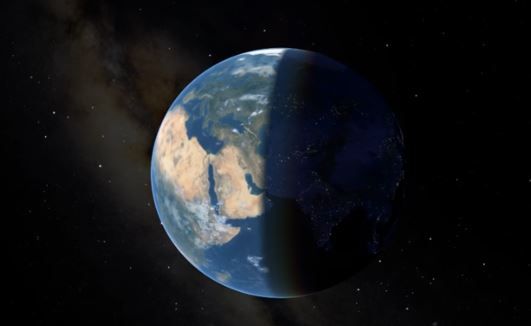 |
|
At any given time, exactly one half of Planet Earth is bathed in sunlight,
and the other half exposed to the dark void.
|
But if we think of pollution more broadly as a human input to the natural environment that causes problems, an input that is in the wrong place or time, or in excessive amounts, we can begin to grasp the concept of light pollution. Similarly, while “noise pollution” doesn’t poison people either, noise – defined as unwanted sound – can be a source of tremendous psychological and physiological irritation and stress.
As human populations continue to boom and as cities spread far and wide across landscapes around the planet, light pollution has emerged as a growing problem worldwide because it prevents us from appreciating our connection to the cosmos from whence we came. We are each of us, after all, but recycled, reborn stardust; every single carbon, nitrogen and iron atom in our bodies was fused from lighter elements in searing stellar furnaces and then blasted into outer space in cataclysmic supernovas billions of years ago.
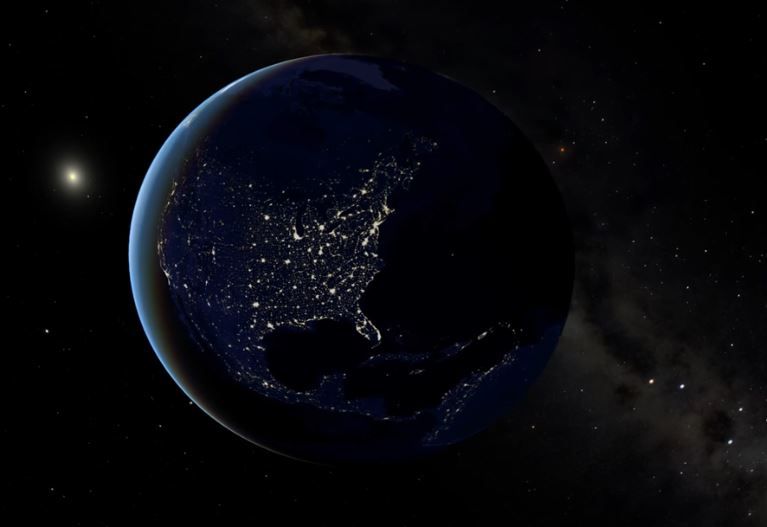 |
| North America at night, dappled with artificial lights.
|
This connection was an intimate one for thousands of generations of our forebears, living under dark skies and sparkling stars night after night, until they retreated to caves or manmade shelters for a modicum of warmth and safety. The glow of campfires may have blotted out the Milky Way, but all it took to get an unobstructed view of the starry vault above was walking a few feet away…taking care not to walk into the claws and jaws of some predator, perhaps a dire wolf, lurking in the enveloping darkness.
Our hundreds of thousands of distant ancestors had no clue what stars were or how they differed from planets (“wanderers,” because they tracked across the firmament, while stars remained rigidly fixed relative to each other); they’d never even heard of galaxies, or black holes, or quasars and pulsars, or the Big Bang. But they could still appreciate beauty, and they certainly experienced awe, even if it was partially sustained by myth and superstition.
As the International Dark Sky Association declares, “The natural night sky is our common and universal heritage.”
 |
|
Urban glare (mostly from street lights) and Aurora Borealis (in green, behind) illuminate the surface of the Earth in the vicinity of the Great Lakes.
In the foreground are Chicago and the southern tip of Lake Michigan.
Also visible are Lakes Huron, Erie and Ontario,
as well as the cities of Detroit, Cleveland, Toronto
and many towns and smaller cities.
The atmosphere scatters the glare of street lamps,
creating “sky glows” above the cities that are visible
for a hundred miles or more.
|
In depressing contrast, today, astronomers tell us that most people living east of the Mississippi River will never even see the Milky Way once their entire lives. What a profound loss! It is the severing of an ancient, mystic cord.
Yet according to the International Dark Sky Association, the impacts of light pollution are not just intangible, philosophical and aesthetic. In its evocative video “Losing the Dark,” the association lists a number of other adverse effects, including:
-
Disrupting the growth of plants
-
Interrupting the nesting and reproduction of endangered sea turtles, which are disoriented by night lighting along beaches; both the nesting females and the newly hatched young can be affected
-
Mortality of migrating birds, which crash by the thousands every year into illuminated buildings and towers at night, confused and attracted by their unshielded lights
-
Interfering with the circadian rhythms that regulate humans’ sleep cycle
-
Higher risks of breast and prostate cancer
-
A colossal waste of energy and indirect cause of air pollution and greenhouse gas emissions.
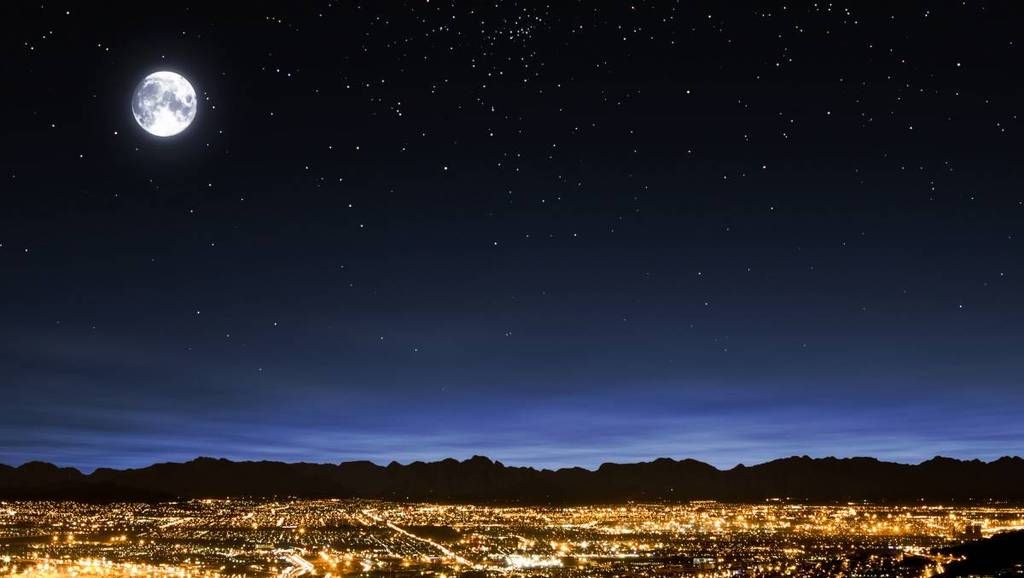 |
| A full moon and bright city lights make for poor stargazing.
|
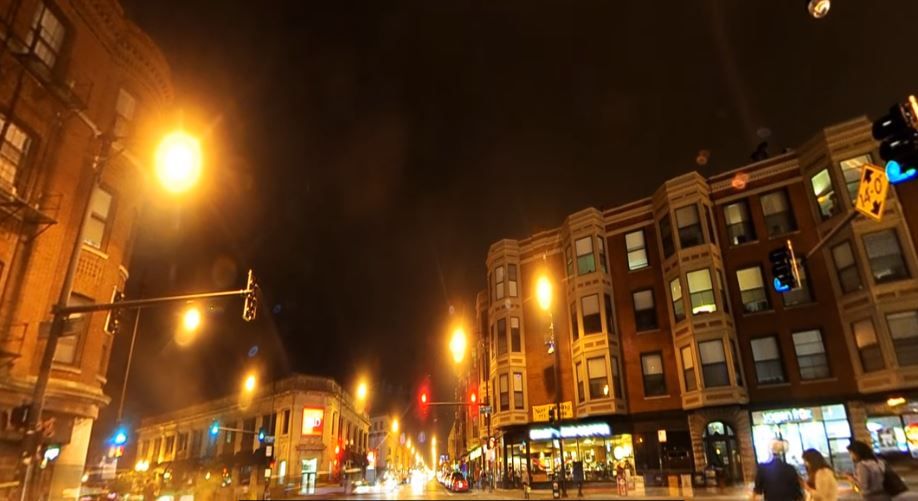 |
| Street lamps, not buildings, are the most significant source of light pollution.
|
Replacing wasteful street lamps that send much of their light upwards with “fully shielded fixtures” which direct light downwards to surfaces that actually need illumination would solve some of the problem of light pollution. So would turning off unnecessary lights.
However, urbanization will continue for many decades to come as a higher and higher fraction of the world’s growing population lives in cities. We can, however, limit the extent of urbanization by stabilizing America’s and the world’s populations sooner rather than later. A non-growing, stable population is the best way to ensure that more and more of Earth’s landscapes are not plastered with pavement and buildings, and the street lamps and lights that accompany them.
CAPS’ motto is “Help save some America for tomorrow.” And while we’re at it, let’s help save some dark skies for tomorrow’s Americans.
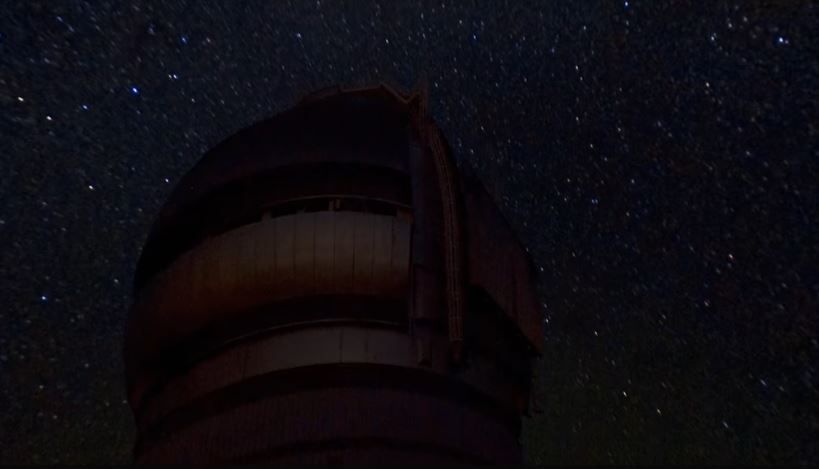 |
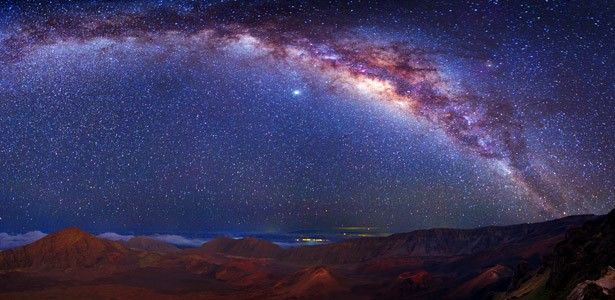 |
|
Astronomers need clear, dark skies
to study celestial phenomena;
light pollution blots out their
view of the universe.
|
What we Earthlings are losing. |




